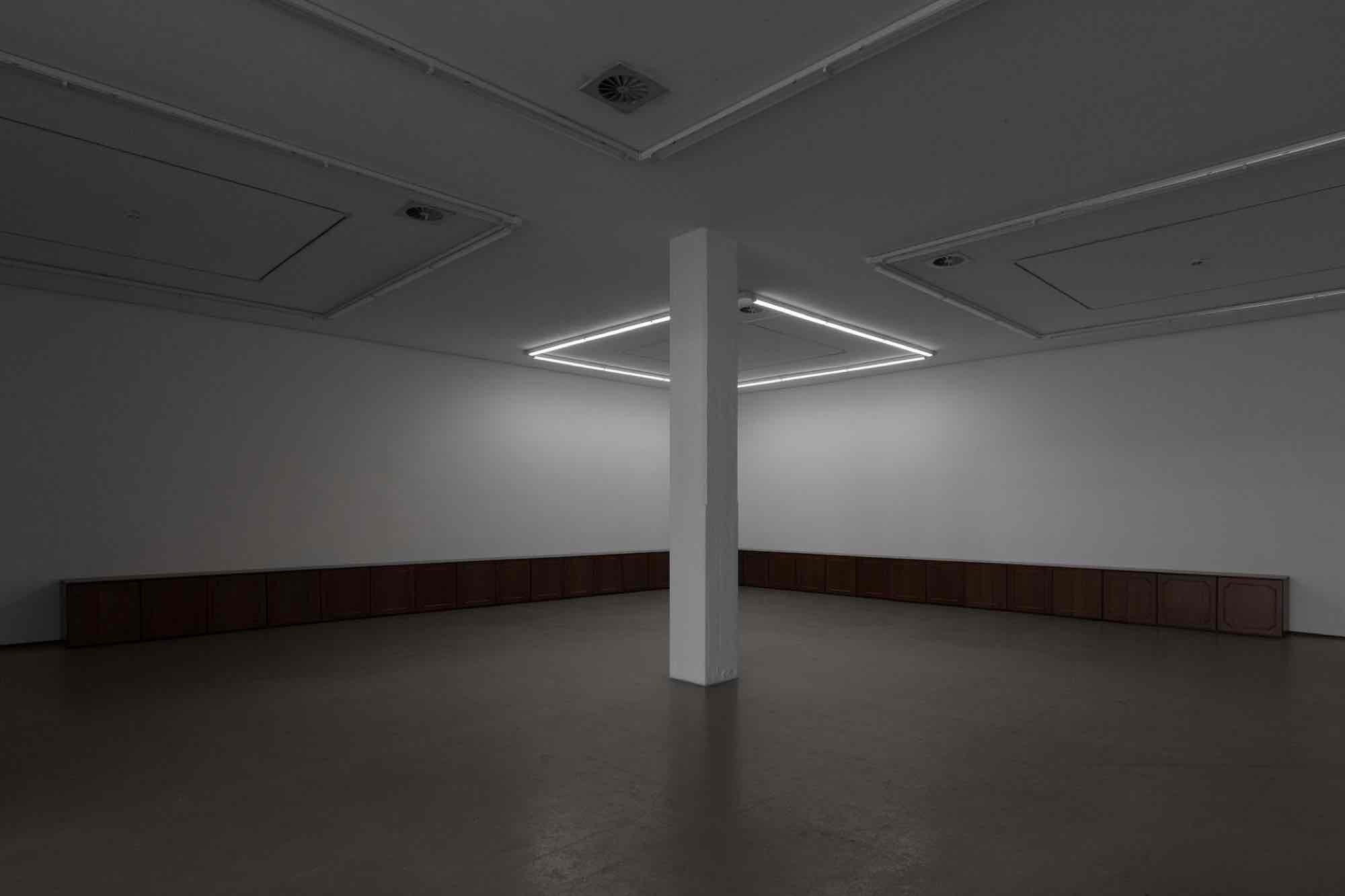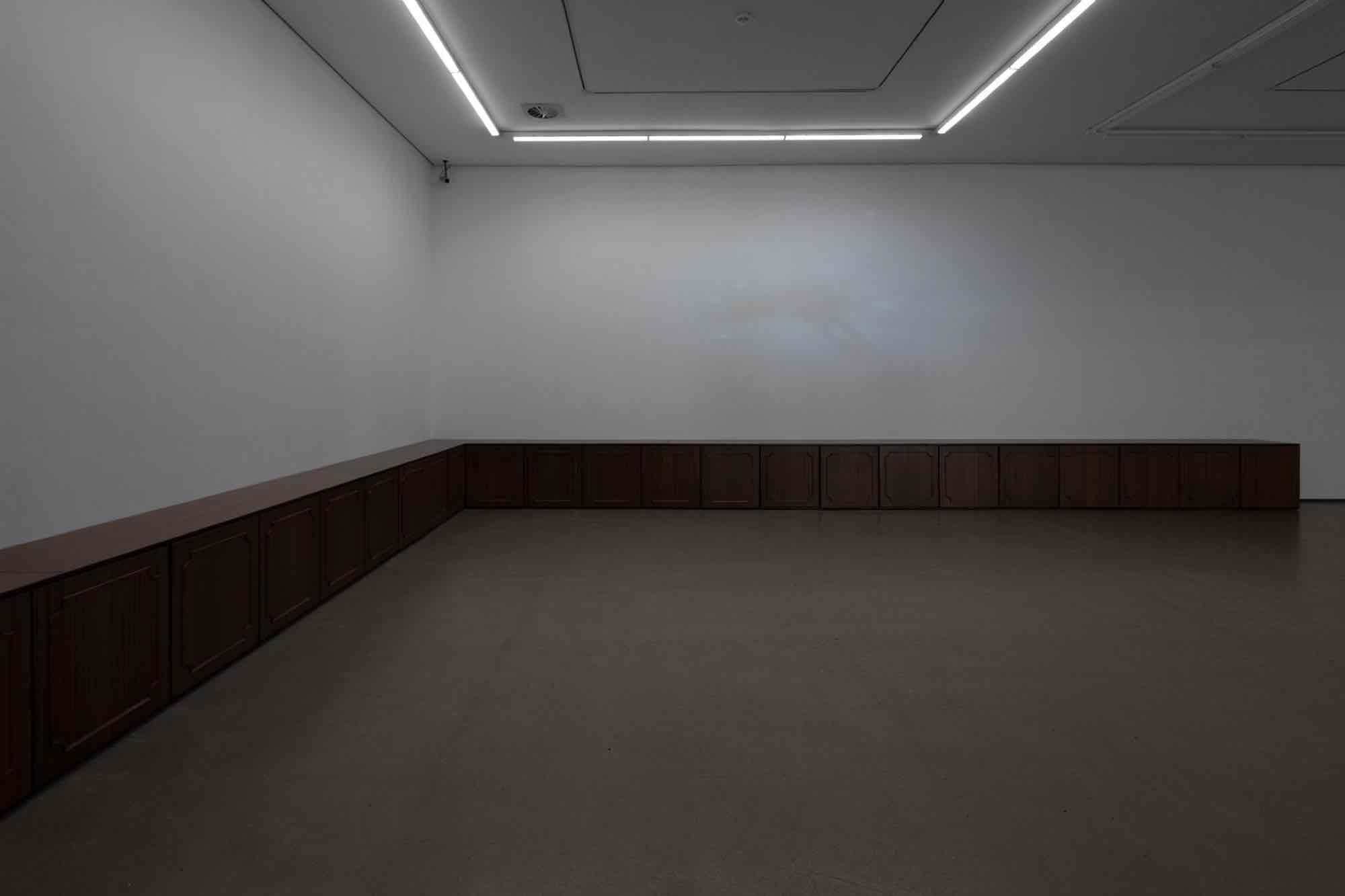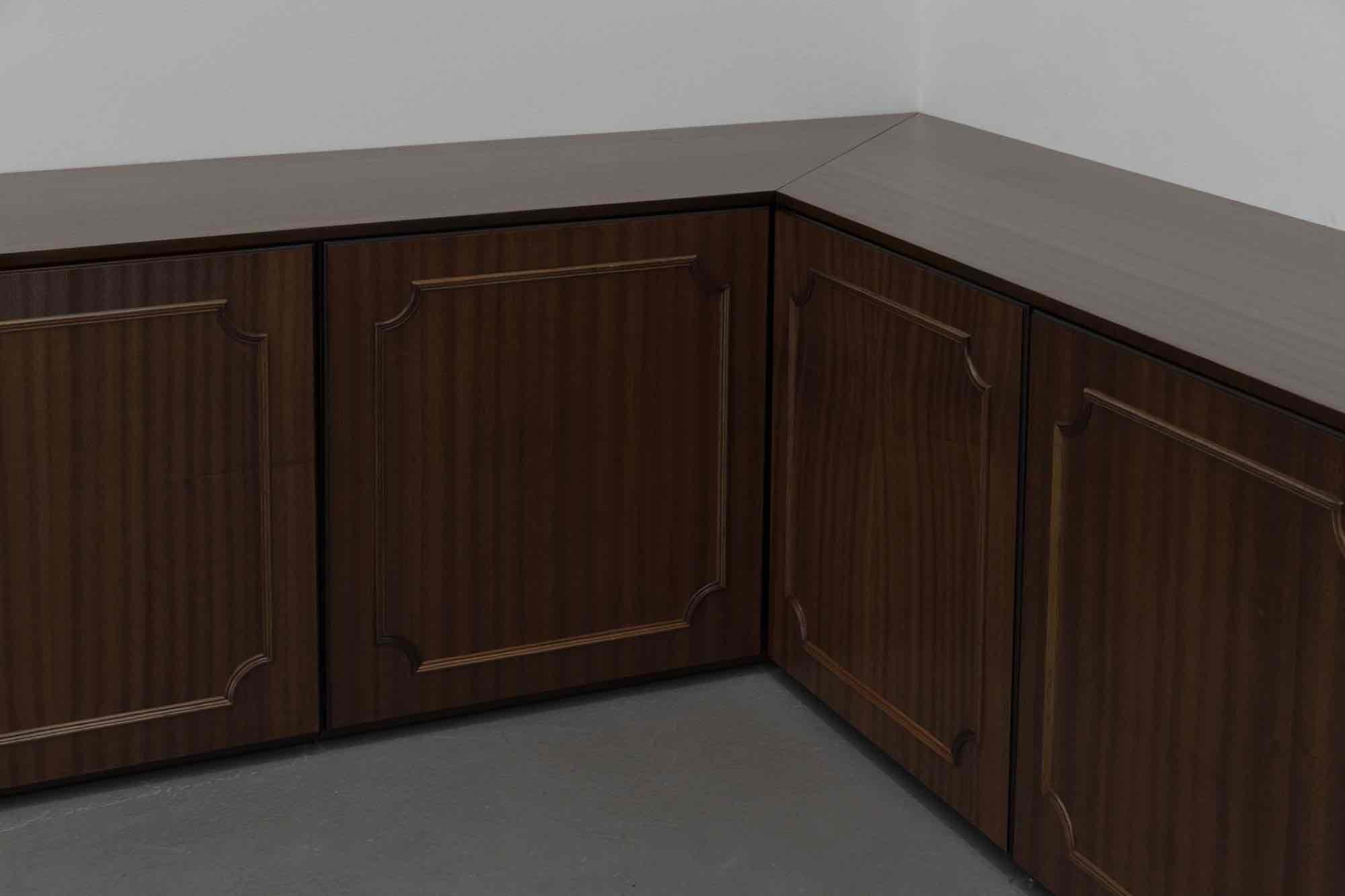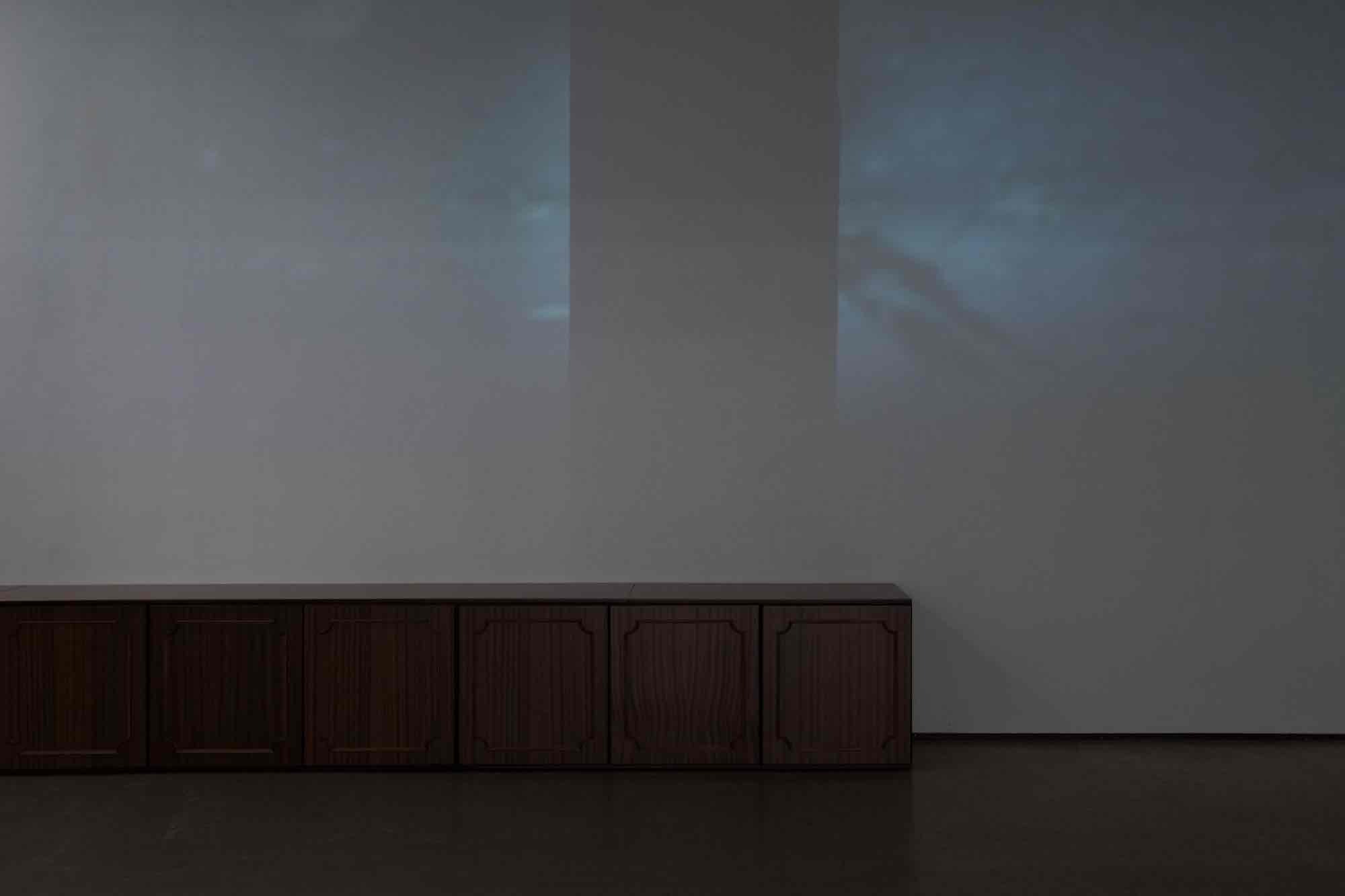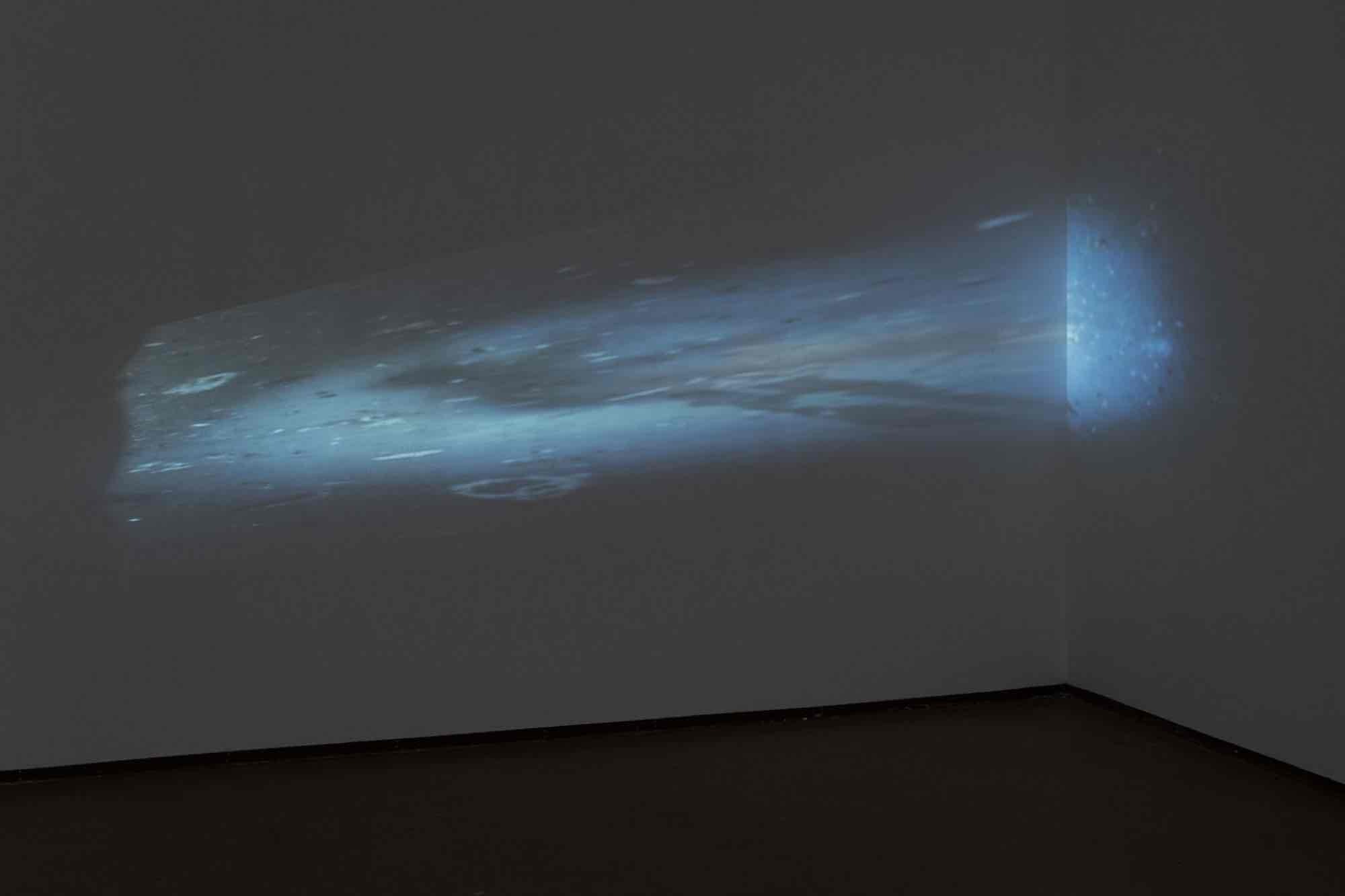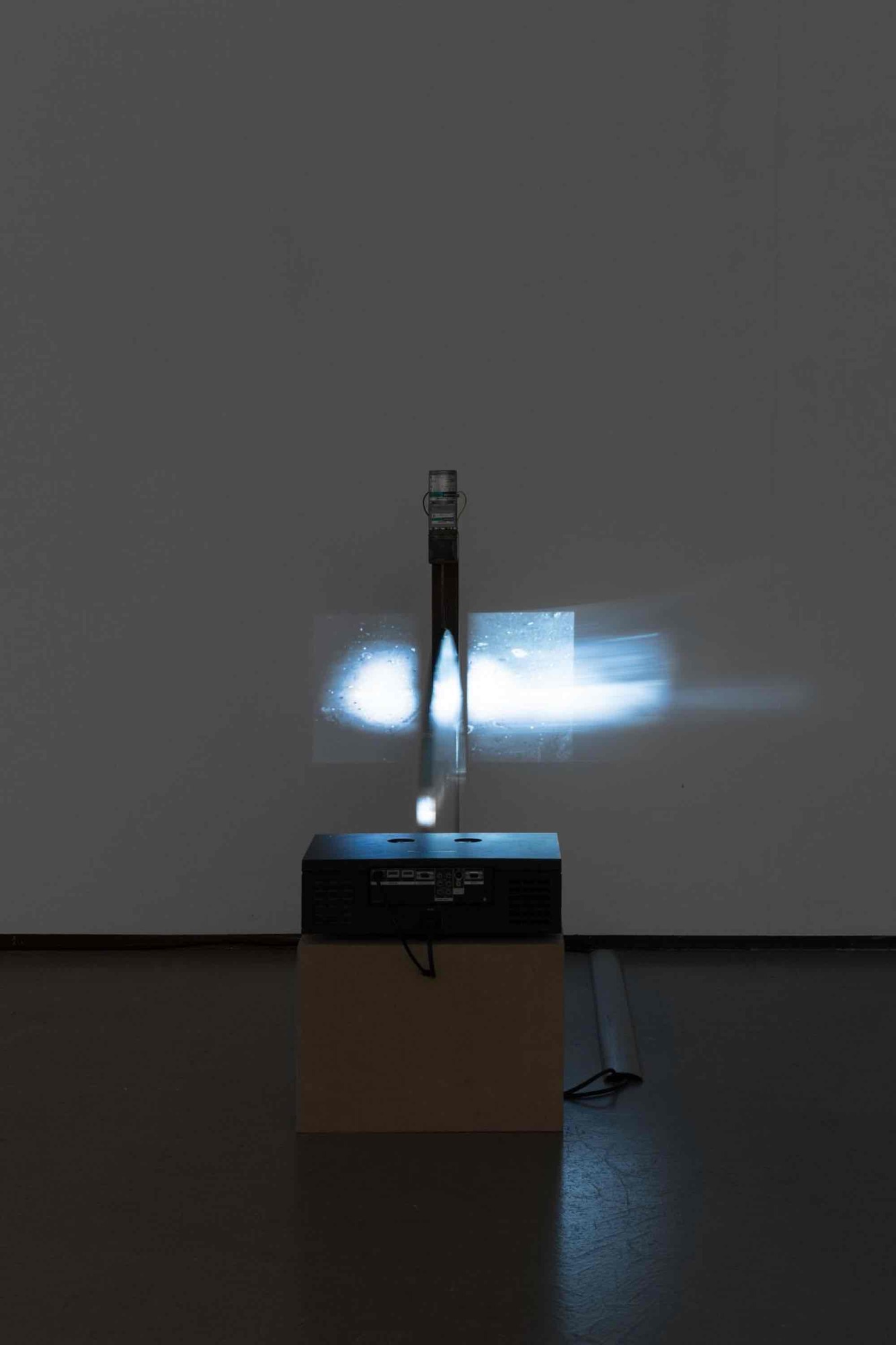Marina Xenofontos
View From Somewhere Near
04 May - 11 Aug 2024
Through cultural artifacts, film, and sculpture, Marina Xenofontos explores the reciprocal production of ideology and knowledge in lived and remembered architecture. The artist examines social space and its relationship to material vernaculars through the repositioning of familiar and standardised forms into sculpture. Here, personal archives that evoke both the transience of life and class structures manifest in the formal language of that which would have otherwise gone unnoticed or neglected, while standing in as a parable of loss and transformation.
In the exhibition by Marina Xenofontos View From Somewhere Near, developed for the Kunstverein in Hamburg, two new works by Xenofontos, Code of Construction (2024) and Sequence (2009-2024) come into dialogue to shed light on objects, places, and spaces that hold significance in shaping a subjectivity perceived as integral to personal identity. Using cultural artefacts, films, and sculptures, the artist explores the reciprocal production of ideology and knowledge in lived and remembered spaces. Xenofontos gives ventilation shafts, cabinets and other liminally coded objects increased visibility, infrastructure that would otherwise remain neglected, thereby showing the maintenance of an eroding shared public sphere, and the subsequent effect on communities.
Code of Construction consists of a series of modular cabinets, which can be found in bedrooms in Cyprus. In the installation Sequence, the recording of a projected film of a writhing ant, is re-projected onto a rotating mirror and reflected into the gallery room and upon the cabinets. Together they question the autonomy of aesthetic forms and their hidden and explicitly present political charge. The exhibition stages a juxtaposition between the realms of the perceived private and personal, set against what is considered public and unknown, challenging the boundaries between them. View From Somewhere Near revolves around questions of heritage and inheritance, loss and transformation, genealogy and what it means to be part of a political trajectory that begins before one's own genesis. Cultural artefacts produced by Xenofontos as well as sculptures and readymades function as objects through which social and political transitions become legible. The interwoven connection between Code of Construction and Sequence forms the starting point for an exploration of the material-affective and private-political entanglements that shape our inner and communal life. These questions come together in condensed form in the parental home–as a social, political, historical, and architectural construction.
The central work, Code of Construction, rearranges familiar and standardised wooden cabinets into a formal sculpture in a unified body. The specific aesthetic of these cabinets has its origins in the British colonial period in Cyprus. They are a material expression of history in the present. The cabinets were installed from the floor to the ceiling on the walls of Cypriot bedrooms until the early 1980s and characterised domestic interiors. By creating spatial orders and atmospheres, these cabinets become an integral part of the stage which shaped the performative production of family life, its hierarchies, roles and power dynamics. In the exhibition space, they are positioned in an L-shape on the floor. The cabinets serve as placeholders, archives, and storages for a multitude of things, ranging from personal ephemera to memories. By rearranging and translating the cabinets in a public institution, the intended logic of the objects is disrupted. Unexpected encounters occur, the domestic finds a new audience. It is these transformative recontextualisations which allow the intimate family order to appear in a new light. Code of Construction explores the relationship between standardization and intimacy, the blurring boundaries between interior and exterior, and navigates the distinctions between the known and the unfamiliar.
The installation Sequence comes into communion with Code of Construction: The re-recorded ant is projected anew, echoing and fracturing further onto a spinning oval mirror that hangs from a gallows-like construction. The film reflects onto the gallery walls and cabinets, adding a new narrative dimension to the exhibition, while the rotation makes a consistent image impossible. In a subtle way, the film traces an intimate parable about loss and transformation. The ant is both a foreign body and part of the ecology of house, a metaphor for life under antagonistic conditions. What becomes of the private infrastructure of a parental home when it is relocated to a public institution? How does the familiar relate to the strange and unknown? Here, working on the deconstruction and externalisation of lived, analogue, digital, imaginary, material, social, narrative, and emotional conditions, allows the subject to reflect upon its own implicit and complicit place within structures that suddenly become transformable.
Marina Xenofontos (b.1988, Limassol, Cyprus) lives and works in Athens, Greece. Recent solo exhibitions include Public Domain, Camden Art Centre (2023); In Practice, SculptureCenter, New York (2023); Carousel, AKWA IBOM, Athens (2022); I don’t sleep, I dream, The Island Club, Limassol (2021). She is the recipient of the Frieze Emerging Artist Award 2022 and will participate in the forthcoming 15th Baltic Triennial in Lithuania.
Curated by Dr. Martin Karcher
In the exhibition by Marina Xenofontos View From Somewhere Near, developed for the Kunstverein in Hamburg, two new works by Xenofontos, Code of Construction (2024) and Sequence (2009-2024) come into dialogue to shed light on objects, places, and spaces that hold significance in shaping a subjectivity perceived as integral to personal identity. Using cultural artefacts, films, and sculptures, the artist explores the reciprocal production of ideology and knowledge in lived and remembered spaces. Xenofontos gives ventilation shafts, cabinets and other liminally coded objects increased visibility, infrastructure that would otherwise remain neglected, thereby showing the maintenance of an eroding shared public sphere, and the subsequent effect on communities.
Code of Construction consists of a series of modular cabinets, which can be found in bedrooms in Cyprus. In the installation Sequence, the recording of a projected film of a writhing ant, is re-projected onto a rotating mirror and reflected into the gallery room and upon the cabinets. Together they question the autonomy of aesthetic forms and their hidden and explicitly present political charge. The exhibition stages a juxtaposition between the realms of the perceived private and personal, set against what is considered public and unknown, challenging the boundaries between them. View From Somewhere Near revolves around questions of heritage and inheritance, loss and transformation, genealogy and what it means to be part of a political trajectory that begins before one's own genesis. Cultural artefacts produced by Xenofontos as well as sculptures and readymades function as objects through which social and political transitions become legible. The interwoven connection between Code of Construction and Sequence forms the starting point for an exploration of the material-affective and private-political entanglements that shape our inner and communal life. These questions come together in condensed form in the parental home–as a social, political, historical, and architectural construction.
The central work, Code of Construction, rearranges familiar and standardised wooden cabinets into a formal sculpture in a unified body. The specific aesthetic of these cabinets has its origins in the British colonial period in Cyprus. They are a material expression of history in the present. The cabinets were installed from the floor to the ceiling on the walls of Cypriot bedrooms until the early 1980s and characterised domestic interiors. By creating spatial orders and atmospheres, these cabinets become an integral part of the stage which shaped the performative production of family life, its hierarchies, roles and power dynamics. In the exhibition space, they are positioned in an L-shape on the floor. The cabinets serve as placeholders, archives, and storages for a multitude of things, ranging from personal ephemera to memories. By rearranging and translating the cabinets in a public institution, the intended logic of the objects is disrupted. Unexpected encounters occur, the domestic finds a new audience. It is these transformative recontextualisations which allow the intimate family order to appear in a new light. Code of Construction explores the relationship between standardization and intimacy, the blurring boundaries between interior and exterior, and navigates the distinctions between the known and the unfamiliar.
The installation Sequence comes into communion with Code of Construction: The re-recorded ant is projected anew, echoing and fracturing further onto a spinning oval mirror that hangs from a gallows-like construction. The film reflects onto the gallery walls and cabinets, adding a new narrative dimension to the exhibition, while the rotation makes a consistent image impossible. In a subtle way, the film traces an intimate parable about loss and transformation. The ant is both a foreign body and part of the ecology of house, a metaphor for life under antagonistic conditions. What becomes of the private infrastructure of a parental home when it is relocated to a public institution? How does the familiar relate to the strange and unknown? Here, working on the deconstruction and externalisation of lived, analogue, digital, imaginary, material, social, narrative, and emotional conditions, allows the subject to reflect upon its own implicit and complicit place within structures that suddenly become transformable.
Marina Xenofontos (b.1988, Limassol, Cyprus) lives and works in Athens, Greece. Recent solo exhibitions include Public Domain, Camden Art Centre (2023); In Practice, SculptureCenter, New York (2023); Carousel, AKWA IBOM, Athens (2022); I don’t sleep, I dream, The Island Club, Limassol (2021). She is the recipient of the Frieze Emerging Artist Award 2022 and will participate in the forthcoming 15th Baltic Triennial in Lithuania.
Curated by Dr. Martin Karcher

